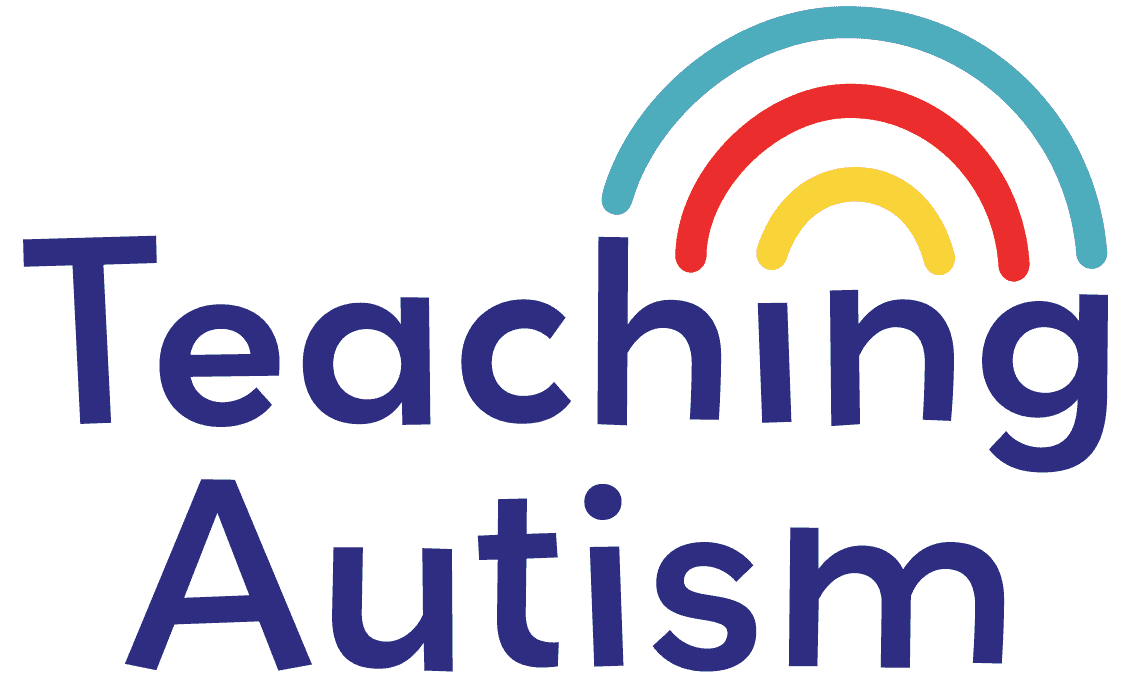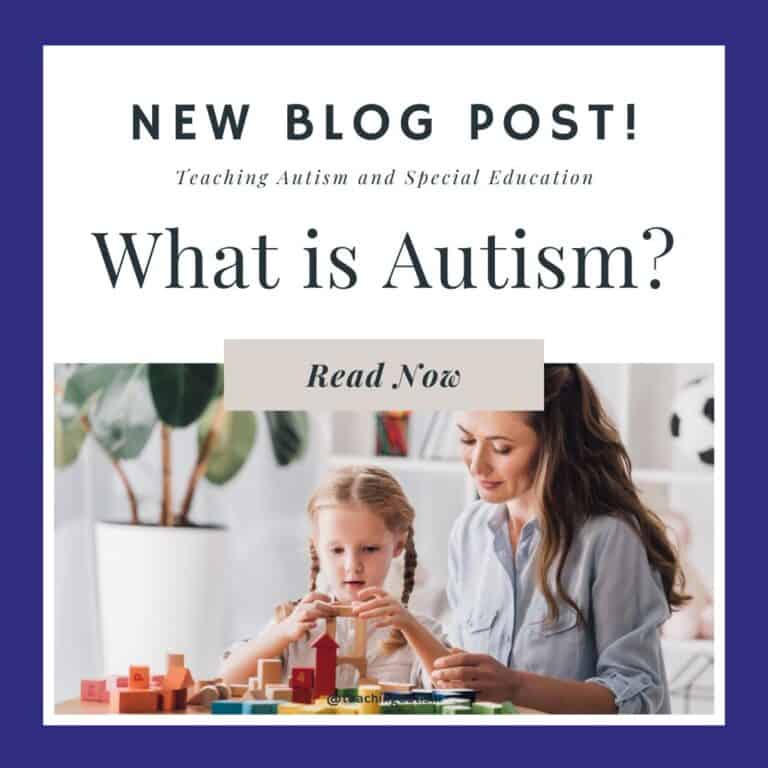Why Does My Student Echo Everything I Say?
If you typed ‘Why Does My Student Echo Everything I Say?’ into Google, you’ve probably landed here. And in this blog post today I’m going to be talking to you about why this is happening and what you can do about it / how to respond.
If you’ve ever said something in class and had a student immediately repeat it back, word for word, you’ve likely experienced echolalia.
Maybe it caught you off guard the first time. Or, maybe you’ve wondered if it’s “just a phase.”
Maybe you’re thinking, Should I be worried? Are they really learning if they’re just echoing?
Let’s clear this up right now: Echolalia is communication.
Yes, even when it doesn’t seem like it, and even when it sounds like your own voice coming back at you on a 3-second delay.
And no, you don’t need to “fix” it.
But understanding why it happens and how to respond can make a huge difference for you and your student. So let’s dive into what echolalia really is, why it’s a valuable part of communication, and what you can do in your classroom to support it.
What Is Echolalia?
Echolalia is when someone repeats words, phrases, or sentences they’ve heard, either immediately (right after you say it) or later on (sometimes hours, days, or weeks later!).
There are two common types:
- Immediate echolalia:
You say, “Do you want a break?” and the student replies, “Do you want a break?” - Delayed echolalia:
A student says, “It’s time to play!” every time they enter a room, even if it’s not play time. They’re repeating something they’ve heard before and attaching it to a context that makes sense to them.
Here’s the most important thing to remember: Echolalia is not meaningless. It’s communication, it’s processing, it’s learning and it’s regulation.
Your student isn’t being defiant or trying to frustrate you. They’re doing what makes sense to their brain right now.
Why Do Students Echo?
There are so many different reasons students use echolalia, some functional, some regulatory, and some just plain joyful.
Here are a few common ones:
1. They’re learning how to use language.
Just like babies coo and mimic before forming real words, some students use echolalia as a bridge to independent communication. They repeat what they hear so they can internalize patterns, tones, and sentence structure.
2. They’re communicating, but differently.
That echoed phrase might be the only way they know how to express a feeling, request, or response. For example:
- “You want a snack?” might mean “I want a snack.”
- “It’s time for Bluey!” might mean “I’m excited!” or “I feel safe here.”
It’s not about what they’re saying, it’s about what they’re trying to say.
3. They’re self-regulating.
Repeating familiar phrases can be calming. It’s rhythmic. Predictable. Safe. For some students, it works like a fidget or stim to help their body feel more regulated.
4. They’re scripting to make sense of a situation.
Some students use lines from shows, books, or previous conversations to navigate a situation. These “scripts” help them organize their thoughts or fill in social blanks.
What Not to Do
Let’s talk about what we don’t want to do when we hear echolalia:
- Don’t try to “stop” it. That’s like taking away someone’s words.
- Don’t assume it’s meaningless. Just because you don’t understand what they’re saying doesn’t mean they don’t.
- Don’t punish or redirect it out of embarrassment. Repeating phrases from YouTube isn’t a behavior problem, it’s communication in its own form.
Instead of trying to eliminate echolalia, we want to understand the function behind it, and help students build more tools to express themselves if and when they’re ready.
What to Do Instead (With Real-Life Examples)
Here’s how you can support your students who echo, and turn those moments into meaningful learning and connection:
💬 1. Model the Language You Want to Hear
When a student echoes back a question like:
You: “Do you want a snack?”
Student: “Do you want a snack?”
Try this:
You: “You can say, ‘Yes, I want a snack.’”
(Pause)
Then model it again using their name: “Alex wants a snack!”
Over time, they’ll start picking up these natural patterns, and they’ll feel empowered, not corrected.
2. Reframe Their Words
If a student repeats “Bluey time!” when they’re happy, reflect that feeling back to them:
“It sounds like you’re really excited!”
“Are you feeling happy?”
This helps give context to their scripts and gently introduces new vocabulary tied to emotions or events.
3. Provide Visual Supports
Pair your speech with visuals or AAC so students can see their choices and responses.
For example, instead of asking an open-ended question, use a visual choice board:
“Do you want crackers or grapes?”
(Point to or offer visuals)
This reduces the pressure to repeat and gives students a way to respond without guessing the “right script.”
4. Use First–Then or Yes/No Structures
Instead of “Do you want to go outside?” (which might get echoed), try:
“First clean up, then outside.”
Or “You can say yes or no, do you want outside?”
Structured choices reduce scripting pressure and provide an easy communication frame to echo.
5. Validate AND Expand
If a student echoes, don’t shut it down. Instead:
- Acknowledge it: “I heard you say, ‘Open the gate!’”
- Expand it: “Let’s open the gate together.”
It’s about building bridges, not cutting off communication.
Quick Recap: Why Is My Student Echoing Me?
Because they’re learning, processing and they’re communicating in the way that works for them right now.
And your job? Not to stop it. But to listen, respond with curiosity, and create a communication-rich environment that supports them in growing at their pace.
Want to Go Deeper?
Understanding echolalia is just one piece of creating a neuro-affirming, communication-supportive classroom.
If you’re looking for more step-by-step, practical strategies to help your students thrive, my Autism Classroom Training walks you through everything from behavior supports to visual systems and so much more, all with a focus on what actually works in real classrooms.
Helpful Links
If you found this blog post helpful, you may also be interested in;
- Echolalia in Autism Functional and Non-Functional
- What is Fragile X?
- Signs of Autism in Toddlers
- What is Autism?
If you found this blog post helpful, please consider sharing it with your friends and colleagues on social media, it helps more teachers find support, and it means the world to me and my little family too.
And if you haven’t already, be sure to check out my Free Resource Library for tons of classroom tools, visuals, and printables to make your teaching life easier (and a whole lot more fun!).
My Autism Classroom Favorites
Click below to find my Amazon classroom favorites;
*Affiliate Disclosure: These links contain affiliate links. This means I may earn a small commission—at no extra cost to you—if you click through and make a purchase. I only recommend resources I genuinely love and think you’ll find helpful!
P.S. Have you signed up for my VIP membership yet? If not, head on over and sign up now. You’ll get access to hundreds and hundreds of resources, templates, crafts and more being uploaded every month!
Nikki








One Comment